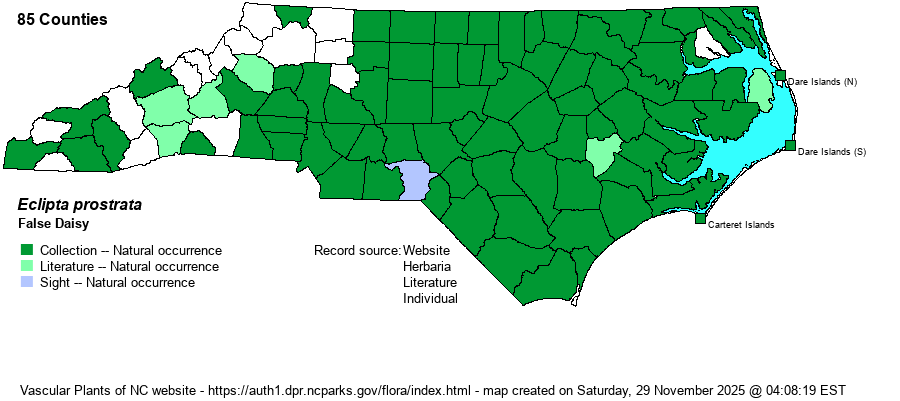| Author | (L.) L. | |
| Distribution | Nearly statewide -- Coastal Plain, Sandhills, and Piedmont; scattered in the low Mountains.
MA to WI, south to FL and TX. Neotropics. | |
| Abundance | Common to locally abundant in the Coastal Plain and eastern-central Piedmont; rare to infrequent in the upper Piedmont and lower Mountains. | |
| Habitat | River shores and backup channels, oxbow ponds and depressions, cypress-gum and maple-gum swamps, wet roadside ditches, shores of impoundments, interdune marshes, and various other mostly sunny and wet/damp disturbed ground. | |
| Phenology | Flowering and fruiting June-November. | |
| Identification | This is an annual herb with spreading to mostly erect stems that root at some nodes. Most plants grow 2 feet long or less, with opposite, lance-shaped, toothed leaves. Heads are very small (less than 1/3-inch across), with numerous dull whitish rays 2-2.5 mm long. The plant often appears weedy, somewhat like an exotic species, though it clearly is a native one. It looks like no other species, composite or otherwise, when in bloom -- as it is the only member of its genus in the Eastern states. | |
| Taxonomic Comments | A synonym is Eclipta alba.
| |
| Other Common Name(s) | Yerba-de-Tajo (often spelled as Yerba-de-tago). This name is often used, but thankfully False Daisy is a good and alternate common name. | |
| State Rank | S5 | |
| Global Rank | G5 | |
| State Status | | |
| US Status | | |
| USACE-agcp | FACW link |
| USACE-emp | FAC link |

